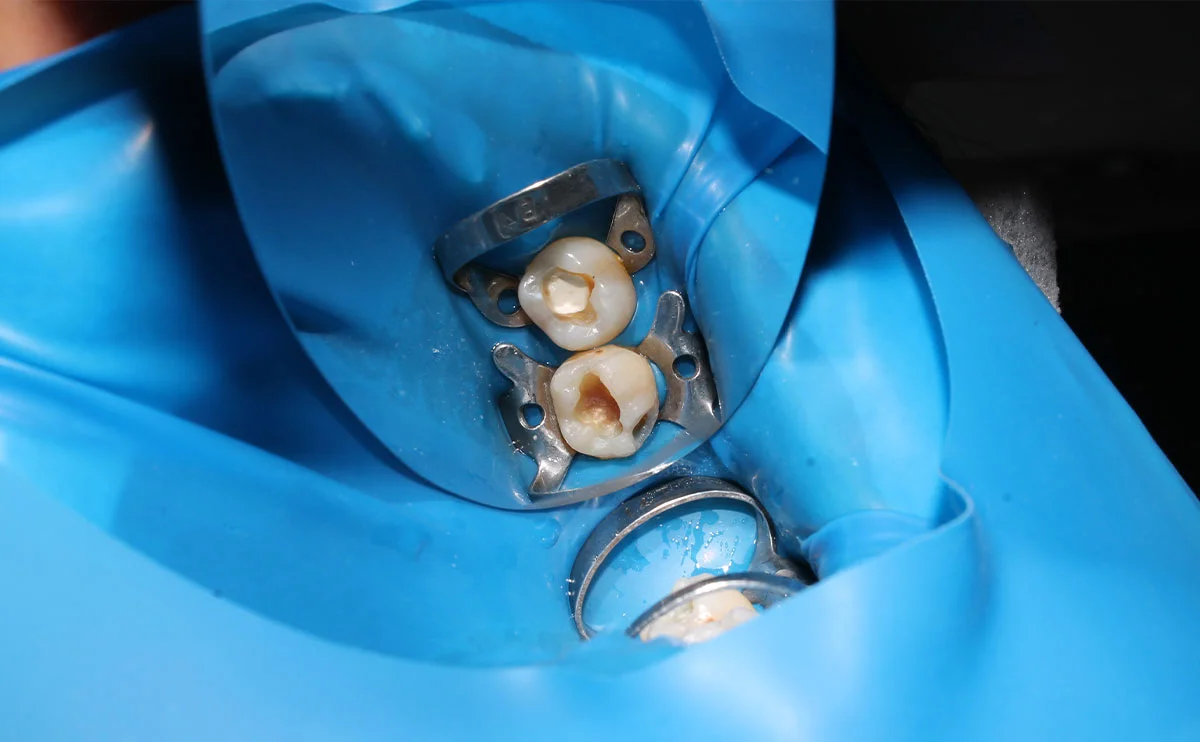Inlay and onlay filling methods used in the treatment of medium and large-scale cavities in teeth offer aesthetic and functional solutions while preserving the natural tooth structure. These filling types, which are especially preferred in cases where classic fillings are insufficient, are both long-lasting and provide a natural appearance in terms of aesthetics.
Inlay fillings are special fillings prepared in a laboratory environment and placed on the chewing surface of the tooth. Onlay fillings are slightly larger than inlay fillings and are designed to cover one or more crests of the tooth.
What is an Inlay Filling?
Inlay filling is used in the treatment of decayed or damaged areas inside the tooth. It is prepared in a laboratory environment in accordance with the natural structure of the tooth and fixed with special adhesives for the tooth. This method is much more durable than classic filling materials and offers an aesthetic solution.
Inlay Filling Advantages
- It perfectly matches the tooth.
- It matches the natural tooth in terms of color.
- It is resistant to abrasion.
- It is long-lasting.
Disadvantages of Inlay Filling
- Since it requires a laboratory process, it can be completed in several sessions.
- It is more costly compared to other types of fillings.
What is an Onlay Filling?
Onlay fillings are larger restorative applications that cover both the inside of the tooth and the crests of the chewing surface. They preserve more of the tooth’s structure and are especially preferred in teeth that have undergone root canal treatment or have serious material loss.
Onlay Filling Advantages
- Provides comprehensive protection.
- Helps prevent tooth breakage.
- Aesthetically indistinguishable from natural teeth.
- Durable and long-lasting.
Disadvantages of Onlay Filling
- Laboratory process is required for its production.
- The application cost is higher than classical fillings.
How are Inlay and Onlay Fillings Performed?
- In the first examination, the decayed or broken area on the tooth is cleaned.
- The tooth is measured and sent to the laboratory.
- The inlay filling or onlay filling prepared specifically for the person is bonded to the tooth in the second session. Afterwards, the bite harmony is checked and the treatment is completed.
What is the Difference Between Inlay and Onlay Fillings?
Both methods are restorations prepared in a laboratory environment. The differences are in the areas they cover.
- While inlay filling is applied only to the inner part of the tooth,
- Onlay fillings also cover the peaks on the chewing surface.
For this reason, the correct method is chosen according to the extent of tooth substance loss.
Inlay Filling Types
- Composite Inlay Filling: Provides aesthetic and economical solutions.
- Porcelain Inlay Filling: The most natural looking filling type.
- Gold Inlay Filling: The most durable filling type, but is rarely preferred due to aesthetic concerns.
Onlay Filling Types
- Composite Onlay Filling: Provides a tooth-compatible, aesthetic appearance.
- Porcelain Onlay Filling: The most aesthetic and long-lasting filling alternative.
- Zirconium Onlay Filling: Durable and has the closest structure to the natural tooth appearance.
Who Can Get Inlay Filling?
- It can be applied to those with moderate decay or fractures in their teeth,
- Patients who cannot achieve successful results with classical fillings,
- Individuals with aesthetic concerns.
Who Can Get Onlay Filling?
- It is recommended for individuals with large areas of decay,
- Patients whose crown of the tooth is damaged,
- People who want aesthetics and durability at the same time.
How Long Do Inlay and Onlay Fillings Last?
Inlay and onlay fillings made with quality materials and correct application have a long lifespan of approximately 10-15 years. This period can be extended even further with regular oral care and check-ups.
Inlay and Onlay Filling Prices 2025
What is the price of an inlay filling? The question varies depending on the type of material used and the location of the tooth. On average, composite fillings are more affordable, while porcelain fillings are more costly. You can learn the most accurate information about prices after a free examination at our clinic.
Which is the Healthiest Dental Filling?
When evaluated in terms of aesthetics, durability and compatibility with the tooth tissue, porcelain inlay and onlay fillings are among the healthiest and longest-lasting filling options. In addition, they do not cause allergic reactions or change the taste in the mouth.
What is the Best Filler Brand?
All filling materials we use in our clinic are selected from internationally certified, FDA and CE certified brands. Brands such as GC, Ivoclar Vivadent, 3M Espe are among the best filling brands worldwide.
We are waiting for you at FARA Dental Center for Istanbul Inlay and Onlay Filling Treatments.
As Private FARA Dent Oral and Dental Health Polyclinic with a modern and technological infrastructure located in Istanbul Pendik Kurtköy Yenişehir, we offer aesthetic and functional solutions in inlay filling and onlay filling applications. If you are also thinking “Where is the best dental treatment done?”, it is time for you to meet our expert staff!
Frequently Asked Questions
Which is better, inlay filling or onlay filling?
This is determined by the damage to the tooth. Inlays are preferred for small and medium-sized restorations, while onlays are preferred for larger areas.
What is the inlay filling healing process?
Normal chewing function returns within a few hours after application. Mild sensitivity may occur, but it passes in a short time.
How long does an inlay filling last?
It can be used for 10 to 15 years depending on the quality of application and maintenance.

